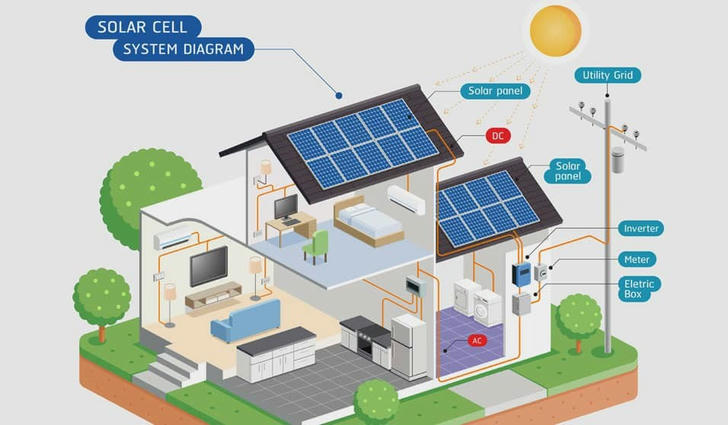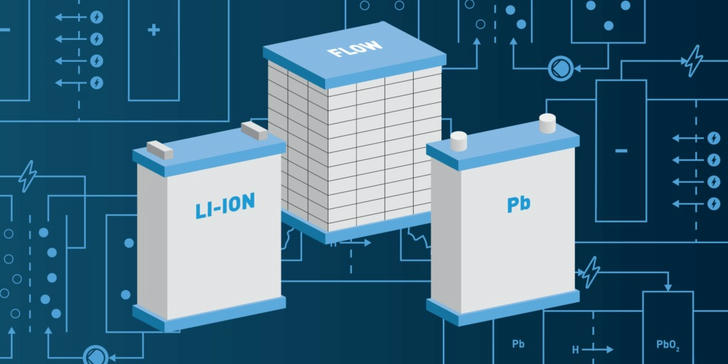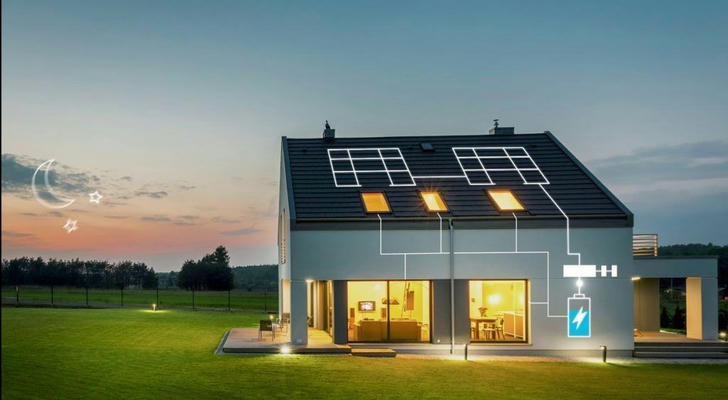Can You Power Your Home with the Sun? A Beginner’s Guide to Solar Batteries
The sun produces more energy in one hour than the world consumes in an entire year. So why aren’t we all powering our homes with it? Thanks to falling prices, improved technology, and increasing energy demands, solar energy—especially when paired with solar batteries—has become a practical and increasingly popular solution for homeowners in 2025.
Whether you're concerned about rising electricity costs, power outages, or just want to reduce your carbon footprint, this guide will walk you through the basics of using solar power and batteries to run your home. Let’s break down what solar batteries are, how they work, and whether they’re the right choice for you.
1. What Is a Solar Battery?
A solar battery stores excess energy generated by your solar panels. During the day, solar panels convert sunlight into electricity. If you don’t use all of that energy immediately, the extra can be:
- Sent back to the grid (depending on your location and net metering policies), or
- Stored in a battery for later use—especially at night or during power outages.
Solar batteries essentially give you control over your energy. Instead of relying entirely on your utility company, you can draw from your own supply, especially during peak-rate hours or emergencies.
2. How Do Solar Batteries Work?
Here’s a simplified step-by-step:
- Solar panels absorb sunlight and convert it into direct current (DC) electricity.
- A solar inverter converts DC to alternating current (AC), which powers your home.
- Excess electricity is diverted into your solar battery.
- When your solar panels aren't producing electricity (at night, cloudy days), your home draws power from the battery first.
- If the battery is empty, your home switches to grid electricity as a backup.
Some systems are designed for off-grid use, while others are hybrid, blending grid and battery use for optimal flexibility.

3. Types of Solar Batteries
There are three main types of solar batteries:
Lithium-Ion Batteries: The most popular type today. Compact, long-lasting, fast-charging, and efficient. Brands like Tesla Powerwall, LG Chem, and Enphase IQ Battery lead the market.
Lead-Acid Batteries: Older technology, more affordable, but bulkier and shorter-lived. Often used in off-grid systems or RVs.
Saltwater Batteries: A newer, eco-friendlier option, but currently less common. They use non-toxic materials and are easier to recycle.
For residential use in 2025, lithium-ion batteries are the gold standard, balancing cost, lifespan, and performance.

4. Benefits of Solar Batteries
a. Energy Independence With solar batteries, you don’t have to rely solely on your utility company. During grid outages—whether due to storms, heatwaves, or system failures—you’ll still have power.
b. Lower Electricity Bills If your area has time-of-use (TOU) pricing, you can avoid using expensive electricity during peak hours by relying on your stored solar power.
c. Environmental Impact Storing and using your own clean energy reduces your dependence on fossil fuels, shrinking your household’s carbon footprint.
d. Quiet, Maintenance-Free Backup Compared to gas-powered generators, solar batteries are silent, automatic, and require little maintenance.
5. Can You Really Power Your Whole Home?
Yes—but it depends. You can technically power your entire home with solar and batteries, but a few factors come into play:
- Solar panel capacity: How much energy your panels can generate in a day.
- Battery size: Measured in kilowatt-hours (kWh). This determines how much energy you can store.
- Home energy usage: The more devices, lights, and appliances you use, the more storage you’ll need.
- Sunlight availability: Cloudy climates may require larger systems to compensate.
In most cases, homeowners opt to partially offset their energy usage—covering essentials like lighting, refrigerators, Wi-Fi routers, and some outlets. Fully off-grid homes are possible but typically require a larger system and more upfront investment.
6. Costs and Incentives in 2025
As of 2025, the average cost of a solar battery system (installed) ranges from $10,000 to $18,000, depending on battery capacity and region. However, prices have dropped significantly in the past five years, making solar storage more accessible than ever.
Here’s what can help reduce your cost:
- Federal tax credits: In many countries, including the U.S., you can claim up to 30% of your solar and battery costs as a tax credit.
- State or local rebates: Certain states and municipalities offer additional cash rebates or incentives.
- Utility incentives: Some power companies offer demand response programs, paying you to use stored energy during peak times.
It’s worth checking with a local installer to see what you qualify for.
7. How Long Do Solar Batteries Last?
Most lithium-ion solar batteries are rated to last 10 to 15 years or 4,000 to 6,000 charge cycles, depending on usage and brand.
Unlike solar panels—which can last 25+ years—batteries may need to be replaced once during your solar system’s lifetime. But as technology improves, newer models offer better durability and warranties.
8. Is It Worth It for You?
Solar batteries make the most sense if:
- You experience frequent blackouts or unreliable grid power.
- You live in a region with high electricity rates or TOU pricing.
- You want to maximize your solar panel investment.
- You value energy independence and environmental sustainability.
If your local utility offers generous net metering, a battery may not be strictly necessary—but it can still enhance your system’s performance and resilience.

Conclusion: The Future Is Bright—and Battery-Powered
In 2025, powering your home with the sun isn’t just a green dream—it’s a realistic, achievable upgrade that more and more homeowners are making. With the rise of efficient solar batteries, you no longer have to waste unused energy or rely on a vulnerable grid.
From cutting your bills to keeping the lights on during storms, solar batteries offer powerful benefits in a compact form. Whether you're going all-in on an off-grid setup or just want backup peace of mind, the sun—and your battery—has your back.
Ready to start storing sunshine? The future of home energy is in your hands—and on your roof.
